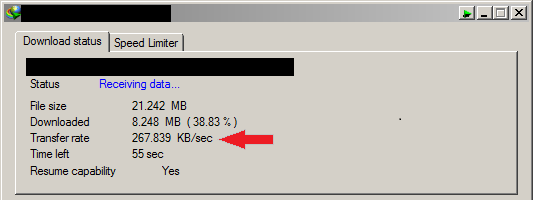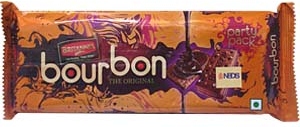Yesterday, 6th July 2014, is when I took my first attempt at a JLPT test. And since it was more than just a regular exam for me, taking the opportunity to share my experience for fellow aspiring students planning on it ahead.
 The new Japanese-Language Proficiency Test has 5 levels: N1 to N5, with N5 being easiest, N1 being the toughest. One can take any of the levels at any time, there being no prerequisite criteria for any, with the choice being entirely on you and your ability to comprehend the language at that point of time. So if you are completely a beginner, you might want to go with N5. Or if you feel competent enough, go in for N4 or straightaway N3, or even later. Taking easier levels simply helps you judge yourself, so the choice is yours.
The new Japanese-Language Proficiency Test has 5 levels: N1 to N5, with N5 being easiest, N1 being the toughest. One can take any of the levels at any time, there being no prerequisite criteria for any, with the choice being entirely on you and your ability to comprehend the language at that point of time. So if you are completely a beginner, you might want to go with N5. Or if you feel competent enough, go in for N4 or straightaway N3, or even later. Taking easier levels simply helps you judge yourself, so the choice is yours.
I took the N5, because of it being the simplest, and for the sake of getting a language proficiency certificate without too much effort. The time constraint was also a factor, as I’ve not taken any formal classes for Japanese, and preferred to self-study by digging out resources from the web, in my free time. In spite of it being the easiest comparatively, for a beginner it is still a tough one, especially the grammar and reading comprehension, if you have not put in a considerable amount of time and practice into it. I only seriously began preparing since 3-4 weeks before the test, and not being a regular either, because of getting occupied with other work often.
Day of the test:
The test in Mumbai was held at Narsee Monjee College of Commerce & Economics in Vile Parle. Time to assemble was 8:15 AM, as the test begins at 9. The good thing about the venue is that it is close to the railway station, well connected by the skywalk.
On my way to the venue, I realized there were a few JLPT takers in my train compartment itself, sitting right beside me. Now that’s fascinating to know there are quite a lot of ambitious Japanese learners in the city who probably get motivated towards the language thanks to anime and manga. One of my online friends came down to Mumbai all the way from Ahmedabad just to take the test, and that was our first meeting in real, thanks to JLPT.
After reaching the venue at ~7:45 AM, I could see even more students, of all ages and ethnicity, crowding the college entrance. There were a few East Asian youngsters too, assuming they might be either Korean or Chinese. The chart put up for the seating arrangement showed that my seat number was the starting number for my classroom, hence my seat being on the first bench :’D What joy? Each one of the four of us friends got allotted different classrooms altogether, so we only met during the two breaks.

I wonder how those unfortunate people must have sat all alone in the entire class xD
Inside the classroom, there was the supervisor who gave instructions to the class periodically, as well as to anyone who enters late, about switching off the mobile phones, and how to fill the test sheets, etc. She was the only one who could speak Japanese with a Japanese proctor, also supervising the class and helping with the distribution and collection of answer sheets. Another proctor, Indian, and an assistant were also present in the classroom at all times.
Syllabus for N5:
The N5 level syllabus has:
- ~110 Kanji (logographic characters borrowed from Chinese that stand for an entire word): These tend to be difficult for most students, but since I’ve been exposed to many of these over time, they are somewhat a piece of cake for me, and I can confidently score quite well in this sub-section.
- ~800 Vocabulary Words: I was not fully done with these yet, so that is where lies the point of failure in comprehending complex sentences.
- Grammar: Comprises of different tense forms, particles, etc. Once again, not so great at this yet, and tend to sometimes go wrong in choosing the right particle or form.
The test begins:
The N5 level test is divided into 3 individual papers:
9:00 to 9:20 AM – 25 mins of KANJI & VOCABULARY
9:50 to 10:40 AM – 50 mins of GRAMMAR & READING COMPREHENSION
11:15 to 11:45 AM – 30 mins of LISTENING
At the start of the test, you are given 3 answer sheets, somewhat similar to these:

There are 3 of these sheets, stuck one below another, for each of the 3 test papers. You are supposed to tear and separate them, to submit each one during the respective paper. Yes in case you weren’t aware of it yet, then the JLPT is entirely based on MCQs, there is no writing involved nor negative marking, which makes easier for luck to favor you in clearing the test.
Test #1:
It began at 9 AM, and it starts with questions on Kanji, which is my favorite section, hence I took it slow assuming 25 minutes is a lot for attempting ~36 questions. BUT I WAS WRONG! :’D My face when I’m around the 28th question and the supervisor alerts 5 minutes left! Totally wasn’t aware I’d need a watch for this test. So please do carry one to time yourself well, as it is easy to get carried away especially if you aren’t fast enough in reading and comprehending Hiragana yet.
I’ve done well in Kanji but cannot say the same about the vocabulary section, so fingers crossed for that.
Test #2:
The second test began after a 20-30 minute break, where I got to meet friends and share our screwed up experience with the first test :’D
You have to face grammar particles at the beginning of this paper, so if you aren’t good at them yet, don’t waste too much time and just choose what you think might have more chances of being the correct answer. Please remember to mark an answer for every question as you are going along, and not leave anything for the end, as I did for a few. This is because you will probably run out of time in the end and then have a hard time randomly choosing an answer or in worst case even not have time to mark them, especially if you’re on the first bench like me :’D and your sheet is collected first.
You will be able to revise your marked answer later as only pencils are allowed in JLPT, so you can erase them anytime, which is better than leaving a question without any answer marked at all in the end.
I guess this second paper also went just fine for me, probably a 40% chance in clearing it. The worst part is that at the end you get large passages for comprehension, and with a slow reading speed you are pretty much screwed.
Test #3:
The last test is Listening skills, wherein the entire class answer the questions together at the same time, so there is no issue of running short of time.
A CD is played in a tape recorder for the whole class, and the questions in the paper are based on the audio conversations on the CD. Please take some practice beforehand with listening (there are samples on YouTube), as you need some amount of concentration with this. The conversations are not repeated so in case you couldn’t grasp a question, get over it and focus on the next one. There is a short break after 15 mins/2 sections of the paper, so rest your mind and prepare yourself to focus again. Keep yourself well hydrated.
Remember that you may use the question paper to scribble rough work, so you may want to at times write down stuff or strike off answers as the audio plays. I even wrote English meanings above certain Japanese words, in the comprehension passages, as it feels easier to come to an answer using them. However, you need to return the question papers after every test, so use them accordingly. 😛
I was able to understand most of the Listening, though not always come to a definite answer, so once again I might say I have a 50-60% of clearing this section.
Afterthoughts:
Overall, I can say I had fun taking the test, and it has certainly improved my comprehending the language quite more than before. In the end, it’s not the result that matters, but your own progress with the language. It’s okay if you fail your first level, you can retake it next time, or you can directly jump to the next level if your preparation is even better. All that matters is using the tests (held twice a year) as a motivation to keep progressing at your own pace. People keep jumping or retaking levels as and how they feel like depending on how qualified they feel at that moment. But of course, getting a certificate upon clearing a level is one great feeling. 🙂
Protip: Do take sample paper tests beforehand, as I believe they help you in answering the questions faster, if you have the practice. As well as there are questions that get repeated at times, just like I saw familiar ones in my own test papers.
If you want any help in preparing for N5, you can contact me for a large collection of resources I’ve gathered over time.

 The new Japanese-Language Proficiency Test has 5 levels: N1 to N5, with N5 being easiest, N1 being the toughest. One can take any of the levels at any time, there being no prerequisite criteria for any, with the choice being entirely on you and your ability to comprehend the language at that point of time. So if you are completely a beginner, you might want to go with N5. Or if you feel competent enough, go in for N4 or straightaway N3, or even later. Taking easier levels simply helps you judge yourself, so the choice is yours.
The new Japanese-Language Proficiency Test has 5 levels: N1 to N5, with N5 being easiest, N1 being the toughest. One can take any of the levels at any time, there being no prerequisite criteria for any, with the choice being entirely on you and your ability to comprehend the language at that point of time. So if you are completely a beginner, you might want to go with N5. Or if you feel competent enough, go in for N4 or straightaway N3, or even later. Taking easier levels simply helps you judge yourself, so the choice is yours.




 With the sudden rising expenses in Mumbai, the island city as well as its suburbs, seem to be moving at a speedy pace towards a standard of living that only makes lives miserable for the local residents, mainly the middle class. With property rates also soaring sky high, luxury apartments amounting to crores of rupees, Mumbai has turned into the most expensive city in the world for its locals, an average Indian now requiring as long as three centuries of work to afford one of these luxury flats in the city.
With the sudden rising expenses in Mumbai, the island city as well as its suburbs, seem to be moving at a speedy pace towards a standard of living that only makes lives miserable for the local residents, mainly the middle class. With property rates also soaring sky high, luxury apartments amounting to crores of rupees, Mumbai has turned into the most expensive city in the world for its locals, an average Indian now requiring as long as three centuries of work to afford one of these luxury flats in the city.













 This is the worst and one of the most immature video reviews I’ve ever come across. It’s.. not even close to being biased either, as any of the countless DS vs PSP videos I’ve ever seen. News people like CNN should definitely stick to just news, what they (might be) good at. Or at least hire a real hardcore gamer for review purposes, not someone (some kid rather pretending to be so young so as to have) ‘grown up with Halo’, LOL. That line still gives me the LMFAO lolwut?
This is the worst and one of the most immature video reviews I’ve ever come across. It’s.. not even close to being biased either, as any of the countless DS vs PSP videos I’ve ever seen. News people like CNN should definitely stick to just news, what they (might be) good at. Or at least hire a real hardcore gamer for review purposes, not someone (some kid rather pretending to be so young so as to have) ‘grown up with Halo’, LOL. That line still gives me the LMFAO lolwut? Oh and if you’ve gotten this far, do check out all the 100+ comments on that page as well, that would save me time from writing the same out here on this post, lol.
Oh and if you’ve gotten this far, do check out all the 100+ comments on that page as well, that would save me time from writing the same out here on this post, lol.